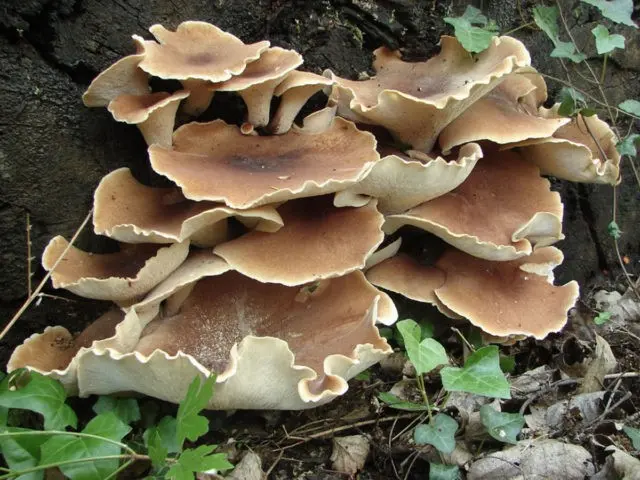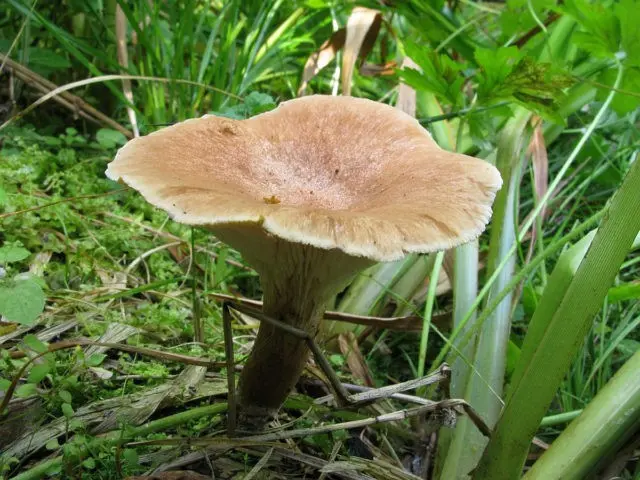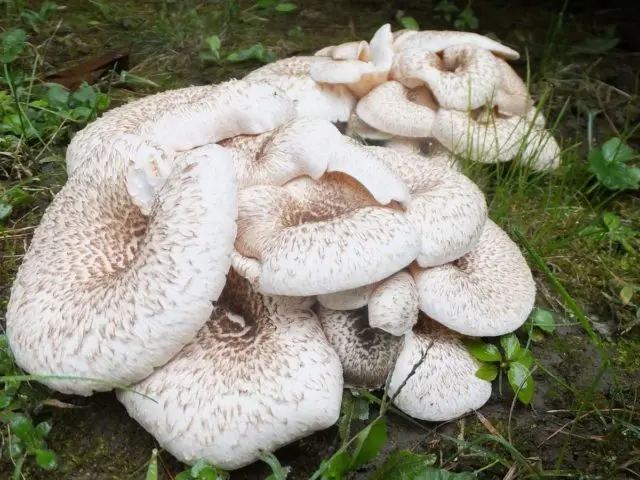Contents
Goblet sawfly is a conditionally edible mushroom of the Polypore family. It rarely occurs on rotten deciduous trunks or exists as a parasite, affecting the tree with white rot. In order not to make a mistake when collecting and not to recruit false fellows, you must carefully study the description, photo and video.
What does the goblet sawfly look like?
Goblet sawfly is a little-known mushroom, so it has few fans. But since it has a good taste and mushroom aroma, it is necessary to be able to distinguish them by external characteristics.

Cap Description
In young specimens, the hat is hemispherical, straightens and becomes funnel-shaped as it grows, the edges are ribbed and fragile. The surface, up to 25 cm in diameter, is dry, painted in a gray-red color. With age, the skin discolors, leaving a dark spot in the center.
The lower layer is formed by narrow serrated plates descending along the stem. The color of the plates changes with age, initially they are whitish, then they become coffee, and in old age they turn dark brown. Reproduction occurs by hemispherical spores, which are collected in a snow-white powder. The pulp is dense, elastic, exudes a fruity aroma.

Description of the leg
A thick and fleshy leg, narrowing towards the base, grows up to 6 cm. The flesh is hard, light cream surface is covered with plates.

Where and how to grow
This forest dweller prefers rotten hardwood. The species can also grow on a living tree, causing white rot. The mushroom is rare, loves a warm climate. Fruiting occurs from June to September. Since the pulp has a pleasant taste and smell, rodents fell in love with it, so the fungus rarely lives to old age.
Is the mushroom edible or not?
The goblet sawfly belongs to the 4th group of edibility, but because of the hard pulp, only young specimens are used for food. Before cooking, the harvested crop is sorted out, cleaned of woody and leafy substrate and boiled for half an hour. Prepared mushrooms can be fried, stewed, used as a filling for pies.

Twins and their differences
The goblet sawfly, like any inhabitant of the forest, has twins:
- Brindle – conditionally edible. It grows on rotten deciduous trees from June to September. It can be recognized by a funnel-shaped cap of a dirty gray color with numerous brown scales and a whitish dense stem. The pulp is dense, fragrant, with mechanical damage it turns red.

- Scaly – an edible specimen that grows on the stumps of coniferous trees. Grows in small families from June to September. Since the species has a solid fruiting body, only young specimens are suitable for cooking.

Conclusion
The goblet sawfly is a conditionally edible representative of the mushroom kingdom. Prefers rotting wood, bears fruit from June to September. In cooking, caps of young mushrooms are used, so in order not to make a mistake during the mushroom collection, you need to carefully study the description of this species.











